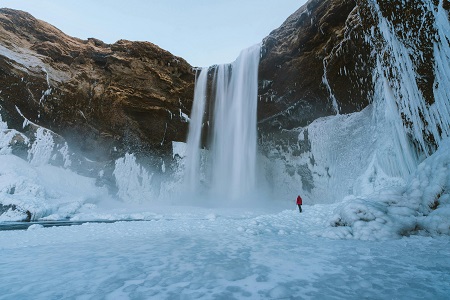Earth’s surface temperature has reached new heights. And, it holds an imminent threat to humanity. Among the various risks, thawing permafrost has not received the due public attention. For our understanding, according to the National Geographic, Permafrost is a permanently frozen layer on or under Earth’s surface. It consists of soil, gravel, and sand, usually bound together by ice. Permafrost usually remains at or below 0°C (32ºF) for at least two years.
Permafrost is important for the climate and environment ecosystem. They hold large volumes of water and play a vital role in microclimate management. Beyond the perils of losing the listed advantages, these structures have danger within. Yet, preserving such geological structures has always taken a setback.
Permafrost is known to contain the organic carbons within the planet’s soil. As the permafrost thaws, these stored carbon dioxide (CO2) and methane will be released into the atmosphere. Even though a small fraction is unleashed, it is a threat to the global climate system and even accelerates climate change.
Apart from that, permafrost is a reservoir for millions of microorganisms and viruses. As the earth warms, permafrost starts to thaw. Upon thawing, it releases microorganisms from their frozen confinement to natural ecosystems.
Every microbe is not dangerous. However, the presence of one dormant microbe species is enough to stimulate a global health crisis. Reawakening of such ancient viruses or microbes can damage human plants, or even animals also. Sometimes, identifying a cure for such long-forgotten disease is a daunting task.
Once, permafrost was considered a perfect place to dispose of waste materials. As permafrost collapses, tonnes of waste will be exposed to air, water and land. From the depository of plastics and chemicals to radioactive waste from the Cold war, this place has them all. Eventually this leads to catastrophical biogeochemical disaster.
Today, thousands of people thrive and live in the permafrost regions. As the permafrost melts it can destabilise ground above it. This can lead to potentially fatal disasters and even may change the landscape of the place.
Ironically, least is done in such a menacing situation. Instead, industries and people are eyeing on opportunities as the ice vanishes. Melting ice has exposed new lands rich in minerals and fossil fuels, leading to a new “gold rush.” Not only that, new shipping routes and cruise tourism has opened as the glaciers are disappearing. Once, the relation between thawed permafrost and outbreak of anthrax in western Siberia was established. If the action plan is delayed, history will repeat itself in fearful terrifying ways.
Permafrost is one horizon of Green Recovery we need to address better. What are your thoughts on Permafrost? Do let us know.
Photo by Simon Migaj: https://www.pexels.com/photo/person-walking-on-snowfield-953182/
—o0o—




